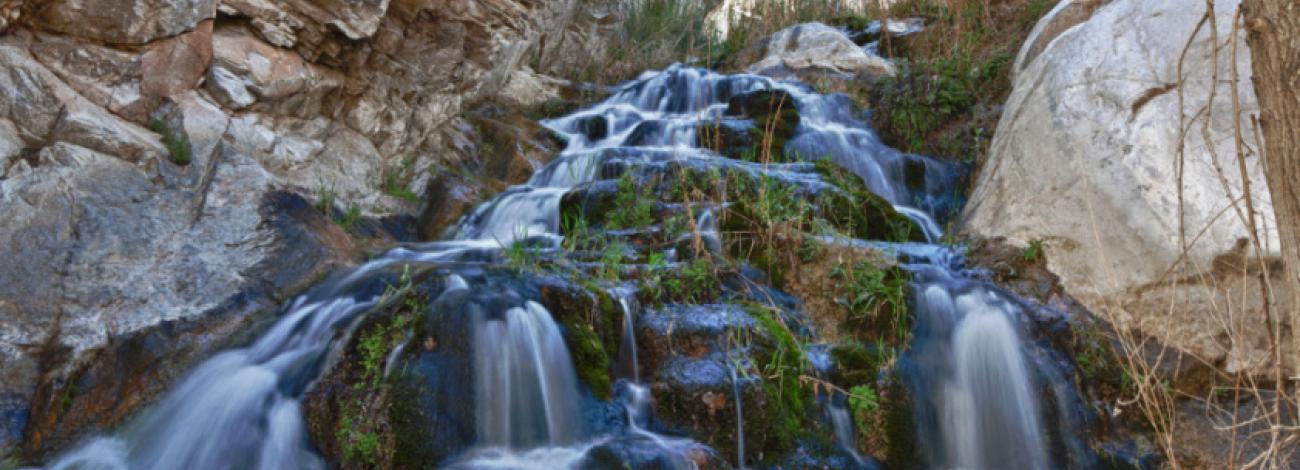
Surprise Canyon Creek Wild and Scenic River
Originating in the Panamint Mountains of Death Valley National Park, Surprise Canyon Creek cuts deeply into the landscape as it flows west through the national park and into the BLM's Surprise Canyon Wilderness. The creek's gradient is steep, dropping from above 6,000 feet to below 2,000 feet in approximately 7 miles. A rare perennial desert stream, Surprise Canyon Creek's flow is fed by springs that bubble up from the canyon walls.
In this arid landscape, Surprise Canyon Creek supports lush riparian habitats, including stands of cottonwood and willow trees which provide homes for numerous species of birds, reptiles and mammals. The canyon supports important bighorn sheep habitat and the rare Panamint daisy among many other unique plants and animals. For thousands of years, Surprise Canyon has served as a trail through the rugged Panamint Mountains for Native Americans, miners and, most recently, hikers. The creek and surrounding landscape offer outstanding scenic and recreational opportunities, including hiking to the abandoned gold mining town of Panamint City in Death Valley National Park.
- Outstandingly Remarkable Values






Scenic
Surprise Canyon has outstanding scenic quality including the continued stream flow, riparian vegetation, narrow slot canyon and waterfalls. At the far eastern edge, along the north wall of the canyon, is a remarkable seep formation known as Limekiln Spring. This spring has a shaded grotto that is covered with thick growths of maidenhair fern and moss and is fed by a steady dripping curtain of water — a spectacular verdant feature set against the rough and parched canyon wall.
Recreation
Surprise Canyon provides an exceptional semi-primitive recreation opportunity. The canyon bottom forms a corridor through the rugged 29,180-acre Surprise Canyon Wilderness. Several segments of Surprise Canyon offer outstanding hiking, bird watching, botanizing, photography, and backpacking opportunities. The hike from Christ Wicht Camp along this perennial stream and through the narrow slot canyon to the abandoned ghost town of Panamint City is one of the most outstanding treks in the California desert.
Wildlife and Plants
Surprise Canyon was designated as an Area of Critical Environmental Concern by BLM in recognition of the area's significant natural and cultural resources. The area is with in the larger West Panamint Mountains Wildlife Habitat Management Area and supports extensive Cottonwood and Willow Streamside Woodland, considered an Unusual Plant Assemblage by BLM. Several federal sensitive species have been located in Surprise Canyon in limestone outcrops including Panamint dudleya and Death Valley round-leaved phacelia. The talus slopes in the canyon also support another federal sensitive species endemic to the Panamint Mountains, the Panamint Daisy. The desert bighorn sheep, a BLM California sensitive species and California Department of Fish and Wildlife fully protected species, inhabits the region surrounding the canyon. The canyon also provides excellent foraging and roosting habitat for a variety of bat species, which are BLM California, and CDFW sensitive species. These include the spotted bat, western mastiff bat, Townsend’s big-eared bat, pallid bat, fringed myotis, Western small-footed myotis and long-eared myotis. A rarely seen mammal, the ringtail cat — a CDFW protected species, occurs in the rocky portions of the canyon.
- California Wild and Scenic Rivers
